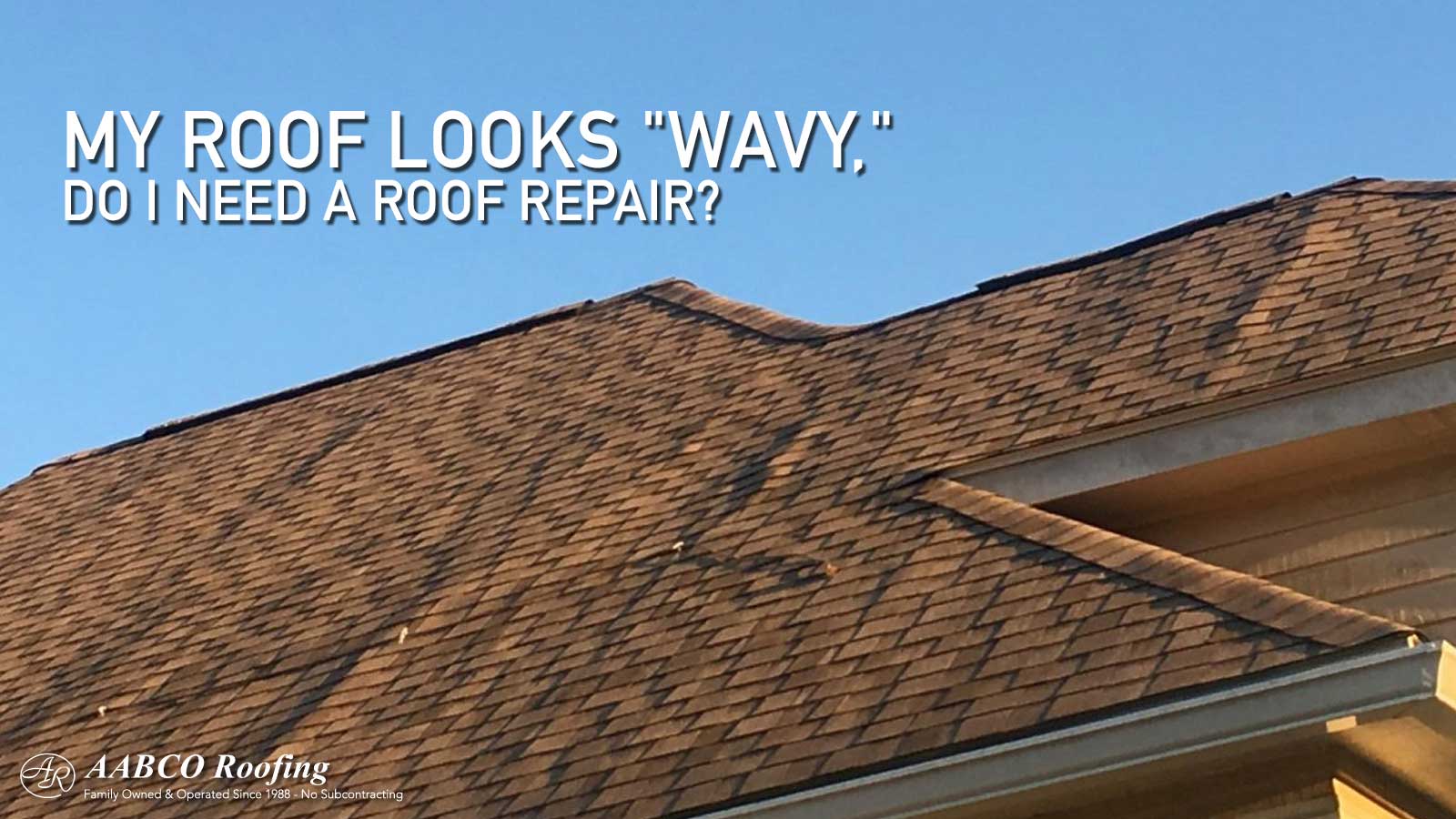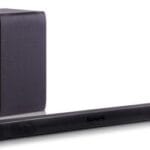Have you ever stepped back and noticed that your roof looks a bit wavy? It’s a sight that can be puzzling and even concerning.
You might start wondering if there’s a hidden problem or if it’s just an optical illusion. These ripples and waves can have various causes, and understanding them is crucial to maintaining the safety and aesthetic appeal of your home. Imagine the peace of mind you’ll feel once you uncover the reasons behind your roof’s unusual appearance.
This knowledge not only empowers you to take action but also protects your investment. By diving deeper into this topic, you’ll learn whether it’s something to worry about or just a quirk of your roof’s design. Stick around to find out what’s really going on up there and how you can ensure your roof stays strong and reliable.

Credit: www.reddit.com
Roof Structure Basics
Your roof plays a vital role in protecting your home. A wavy roof might indicate structural issues or material problems. Understanding the basics of roof structure helps identify these issues.
Roof structures are complex and made of various materials. They must withstand weather conditions and the weight of the roof itself.
Materials Used
Common materials include wood, metal, and asphalt shingles. Wood provides a sturdy frame, but can warp if wet. Metal is durable, yet heavy. Asphalt shingles are cost-effective and lightweight.
Each material affects the roof’s appearance and durability. Choosing the right material is crucial for a flat and stable roof.
Construction Techniques
Construction techniques vary by design. Rafters and trusses are popular methods. Rafters involve beams sloping from the ridge to the eaves. They support the roof’s weight.
Trusses are pre-fabricated and offer more support. They are cost-effective and quicker to install. Both techniques influence the roof’s shape and stability.
Improper installation can cause a wavy appearance. Ensuring skilled craftsmanship is essential for a smooth roof.

Credit: www.aabcoroofinginc.com
Signs Of A Wavy Roof
A wavy roof can be an alarming sight for homeowners. Understanding the signs helps in addressing the issue promptly. Identifying these signs early can prevent further damage and costly repairs.
Visual Indicators
Stand back and observe your roof from a distance. A wavy roof often shows visible dips and rises. These irregularities disrupt the smooth line of the roof. Look for uneven surfaces that catch the light differently. Shingles might appear misaligned or buckled. These are clear signs something is amiss.
Common Patterns
Waviness often follows specific patterns. Regular ripples or waves across the roof are common. These patterns might run horizontally or vertically. Notice areas where the roof seems to sag between rafters. This sagging indicates possible structural issues. Pay attention to parts of the roof that seem to bow inward. This can be a sign of underlying problems.
Poor Installation
Have you ever glanced up at your roof and noticed it looks a bit wavy? This could be due to poor installation. A roof isn’t just about keeping the rain out; it’s about maintaining the integrity of your home. When a roof is installed incorrectly, it can lead to issues that go beyond aesthetics. Let’s dive into two common installation mistakes: improper alignment and inadequate fastening.
Improper Alignment
Imagine trying to fit puzzle pieces together without checking if they match. That’s what happens with improper alignment. When shingles are not aligned correctly, it can create a wavy appearance. This might seem trivial at first, but misaligned shingles can lead to water seepage.
Picture a heavy rain pouring down on your roof. If the shingles aren’t aligned, water can sneak underneath them, causing leaks. Noticing this could save you from potential water damage in the future. Have you checked your roof’s alignment recently?
Inadequate Fastening
Securing shingles might seem straightforward, but inadequate fastening can lead to a host of issues. Loose shingles can flap in the wind, giving your roof that wavy look. It’s like wearing a scarf that’s not properly tied—it looks off and doesn’t do its job.
Shingles need to be tightly fastened to withstand weather conditions. Over time, poorly fastened shingles can come loose, leading to more significant problems. If you’re hearing strange noises during windy nights, your roof might be waving hello! Checking the fastening can prevent these future headaches.
Think about it: a wavy roof isn’t just an eyesore; it can be a hint of underlying issues. Ensuring proper installation from the start is crucial for the longevity of your roof. Have you considered getting a professional inspection to avoid these pitfalls?
Material Wear And Tear
Roofs can appear wavy due to material wear and tear. Weather exposure weakens roofing materials, causing uneven surfaces. Over time, this natural degradation leads to a wavy appearance, affecting the roof’s aesthetic and functionality. Regular maintenance can help address these issues early on.
Material wear and tear can significantly affect the appearance of your roof, making it look wavy or uneven. Various factors contribute to the deterioration of roofing materials over time. Understanding these factors can help you decide whether it’s time to repair or replace your roof. Let’s explore how weather and age might be impacting your roof’s condition.
Weather Impact
Weather can be a formidable adversary for your roof. Rain, snow, and ice can seep into the materials, causing them to expand and contract. Over time, this constant movement can lead to a wavy appearance. Think about the last storm you experienced. Did it leave you with puddles on the road or in your yard? Similarly, accumulated water on your roof can weigh it down, causing the materials to sag. Strong winds can also dislodge shingles or tiles, creating uneven surfaces.
Age-related Degradation
As your roof gets older, it naturally starts to wear down. Materials like asphalt shingles or wooden shakes can lose their flexibility. This loss of elasticity can cause them to warp or curl, making your roof look wavy. Consider how your favorite pair of shoes feels after years of wear. They might still fit, but they don’t look as fresh or sturdy. Similarly, an aging roof may still provide shelter but lacks the structural firmness it once had. Have you checked how old your roof is lately? It might be time for an inspection. When assessing your roof’s condition, think about these factors. Are weather patterns in your area particularly harsh? Is your roof approaching the end of its typical lifespan? These questions can guide you toward making informed decisions about maintenance and repairs.
Structural Issues
Experiencing a wavy roof can be worrying. Structural issues often cause this problem. Understanding these issues can help you address them effectively.
Foundation Settling
Foundation settling is a common cause of a wavy roof. As the ground shifts, the foundation moves. This movement affects the entire house structure. Walls, floors, and the roof might become uneven. It’s crucial to check the foundation regularly. Early detection helps prevent further damage.
Roof Frame Damage
Roof frame damage is another reason for a wavy appearance. Strong winds can weaken the frame. Heavy snow or rain adds extra weight. These factors stress the roof frame. Over time, the roof may sag or become uneven. Regular inspections can catch damage early. Timely repairs ensure the roof stays strong.

Credit: e3rr.com
Environmental Factors
Environmental factors can significantly affect the appearance of your roof. Many homeowners notice their roofs looking wavy over time. Understanding the impact of nature can help address these concerns.
Temperature Fluctuations
Drastic temperature changes cause materials to expand and contract. Roofing materials can warp or buckle under such stress. These movements can lead to a wavy roof surface. During summer, intense heat can expand shingles. In winter, the cold can make them contract. This constant cycle weakens the roof structure.
Moisture And Humidity
Excess moisture can seep into roofing materials. High humidity levels make shingles swell and lift. This can create an uneven roof appearance. Water trapped beneath shingles can also cause issues. Over time, this leads to wood rot and structural damage. Maintaining a dry environment helps avoid wavy roofs.
Remedies And Solutions
A wavy roof can result from structural issues or uneven shingle placement. Fixing these problems early prevents further damage. Regular inspections and professional assessments ensure long-term roof health and appearance.
When your roof starts to look wavy, it’s not just an aesthetic concern. Such issues can lead to serious structural problems if left unaddressed. The good news is that there are practical solutions available. By understanding and addressing the root causes, you can restore the integrity and appearance of your roof. Let’s explore some remedies and solutions to tackle that wavy roof effectively.
Professional Assessment
Before jumping into repairs, it’s crucial to get a professional assessment. A roofing expert can pinpoint the exact causes of the waviness. This step ensures that you don’t waste time and money on unnecessary fixes. You might think you can handle this on your own, but remember, an expert’s eye can catch what you might miss. Have you ever tried fixing a leaky faucet only to call a plumber later? The same principle applies here.
Repair Strategies
Once you have a professional’s diagnosis, it’s time to explore repair strategies. If the issue is due to damaged shingles, replacing them might be the simplest solution. For underlying structural problems, reinforcing the roof deck or adjusting the trusses might be necessary. Are you wondering if you should tackle this yourself or hire someone? Consider your comfort level and experience with home repairs. Sometimes, DIY can save money, but professional repairs often save time and provide peace of mind. In some cases, improving attic ventilation can also alleviate waviness. Proper airflow prevents moisture buildup, which can warp materials over time. Have you ever noticed how a stuffy room can make you feel uncomfortable? Your roof feels the same way! By addressing these issues with the right strategies, you can restore your roof’s smooth appearance and enhance its longevity. What remedy will you choose to bring your roof back to shape?
Preventive Measures
Wavy roofs often signal potential problems. Loose shingles or structural issues might be the cause. Regular inspections and maintenance can prevent costly repairs and ensure your roof stays in top condition.
Preventive measures are essential in maintaining a sturdy and aesthetically pleasing roof. You might have noticed that over time, roofs can appear wavy or uneven. This isn’t just an eyesore; it could indicate underlying issues that might lead to costly repairs if not addressed early. By adopting some proactive strategies, you can keep your roof in top shape and extend its lifespan. Let’s explore some practical ways to prevent a wavy roof.
Regular Inspections
Regular inspections are your first line of defense against a wavy roof. Scheduling a professional inspection at least twice a year can help identify potential problems before they escalate. Don’t wait for visible signs of damage. A trained eye can spot issues like loose shingles or structural weaknesses that you might miss. Make it a habit to inspect after severe weather. Strong winds and heavy rains can cause immediate damage. Catching these early can save you from extensive repairs. Even a quick visual check from the ground can alert you to potential problems.
Quality Materials
The type of materials used in your roof construction plays a significant role in its durability. Investing in quality materials might seem expensive initially, but it pays off in the long run. Poor-quality materials are more prone to warping and damage, leading to a wavy appearance. Consider materials known for their longevity and resilience. Asphalt shingles, for example, are a popular choice for their durability and affordability. Ensure that your contractor uses materials with a proven track record. A personal experience taught me this; I once opted for cheaper shingles, only to replace them a few years later due to warping. Quality extends to installation too. Ensure skilled professionals handle your roof to avoid issues like improper alignment and inadequate support. Have you ever thought about how much peace of mind a well-installed roof can bring? It’s worth the investment. By taking these preventive steps, you safeguard not just your roof’s appearance but also its structural integrity.
Frequently Asked Questions
Why Does My Roof Have A Wavy Appearance?
A wavy roof can be due to poor installation, uneven materials, or structural issues. Check for these problems early.
Is A Wavy Roof Dangerous?
Yes, a wavy roof can lead to leaks or structural damage. Consult a professional to assess potential risks.
Can Weather Affect My Roof’s Shape?
Extreme weather like heavy rain or snow can cause a roof to warp. Regular maintenance helps prevent damage.
How Do I Fix A Wavy Roof?
Contact a roofing expert to inspect and repair. They can address underlying issues and ensure proper installation.
Is It Expensive To Repair A Wavy Roof?
Costs depend on the extent of damage and material used. Get multiple quotes for accurate pricing.
Conclusion
Your roof might look wavy for several reasons. It could be due to poor installation, aging materials, or structural issues. Regular inspections help identify problems early. Addressing these concerns promptly prevents costly repairs later. Consulting a roofing professional ensures accurate diagnosis and solutions.
Remember, maintaining your roof is crucial for home safety and value. Don’t ignore visible signs of damage. Take action to protect your investment. A stable, well-maintained roof offers peace of mind. Be proactive about roof care. Your home deserves the best protection.
Keep it safe, sound, and secure.




